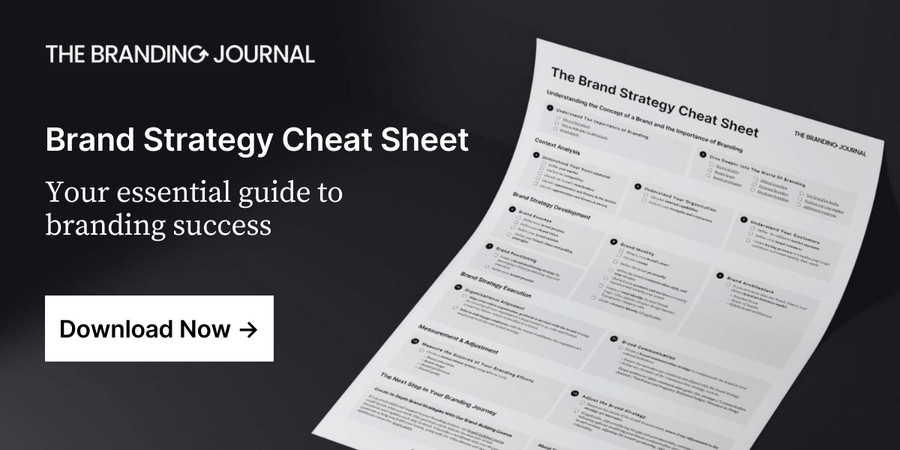On a recent Sunday afternoon, my social scrolling caused me to stumble on a new symbolism for Diet Coke trending on social media. As both a brand strategist and a recovered Diet Coke addict, I was kind of fascinated.
Diet Coke markets itself as the preferred beverage for its “crisp, refreshing taste”. But the brand has taken on a life of its own inside workplace culture as the rocket fuel for America’s machismo working culture, including grueling hours and take-no-prisoners work ethic. Taste is secondary to performance and identity.
I was reminded of two essentials of branding: first, brand loyalty is often connected to identity; second, brands don’t live in a vacuum. A single brand must resonate with vastly different audiences—customers, employees, investors—each of whom may reinterpret its meaning in unexpected ways. Some brands react to this redefinition; others build with flexibility in mind.
How can companies balance a consistent brand identity with the reality that audiences will shape its meaning in ways the company never anticipated?
Proven Systems for Business Owners, Marketers, and Agencies
→ Our mini-course helps you audit and refine an existing brand in 15 days, just 15 minutes a day.
→ The Ultimate Brand Building System is your step-by-step blueprint to building and scaling powerful brands from scratch.
Reactive Adaptation: How Nike and Apple Adjusted to Audience Redefinition
Nike and Apple are both iconic, long-standing brands that faced moments when unexpected audience segments redefined their brands in ways the companies never intended. Their success came from recognizing these shifts and adapting accordingly.
Nike: Redefining the Air Jordan
When Nike launched the Air Jordan in 1984, it was positioned as a performance basketball shoe, targeting athletes who identified with Michael Jordan’s rising star as an exceptional athletic performer. The shoe delivered superior cushioning, ankle support, and a design optimized for the game.
But a wildly passionate segment of the audience took the Air Jordan way beyond the basketball court to intersect with lifestyle. Hip-hop artists and streetwear culture transformed the sneaker into a status symbol, featured in music videos and lyrics, fueling a sneakerhead culture where Jordans became collectible commodities.
Nike could have resisted this shift, insisting that Air Jordan remain an elite sports shoe. Instead, it embraced the movement, releasing limited-edition designs, and collaborating with artists, designers, and musicians, which allowed Air Jordans to evolve into both a sportswear and lifestyle brand without ever abandoning its roots in athletic performance. Without losing its technical focus, Nike engaged in a state of play with its audience to drive endlessly creative and lucrative results.
Apple: Evolving the iPhone
Apple experienced a similar audience-driven shift with the iPhone. Originally launched as a revolutionary tool for communication, productivity, and digital music, the iPhone was designed as a Swiss Army knife for the digital age. Most particularly, it played on the obvious but previously untapped truth that portable computing was making a blurring of device types possible.
This simple but revolutionary mental pivot freed everyone from the categories of the past, ushering in a new era of personal freedom. And that was Step One of what came next. The iPhone became much more than the simple merging of utility and communication. It became a powerful tool for personal creative expression. Directors like Sean Baker and Steven Soderbergh shot entire films on iPhones. The device also became a symbol of affluence, status, everyday artistry, and the creator culture.
Any other company but Apple may have missed or underappreciated the cultural shift, doubling down on the device as primarily about digital convenience or utility. Instead, it leaned into the transformation, launching its “Shot on iPhone” campaign, refining its camera technology, and emphasizing its creative potential, all while maintaining its identity as a premium, high-performance product.
Nike and Apple both teach an important lesson: when an audience redefines your brand, resistance is unproductive. Listening, playing, adapting, and evolving with fans is often the path to taking a great product to an iconic product—to the holy grail of a product culture.
Proactive Adaptation: Brands That Design for Multiple Audiences from the Start
Nike and Apple successfully adapted to unexpected audience shifts. Other brands like Amazon and Airbnb have intentionally structured themselves to cater to multiple audiences from the outset. Amazon wasn’t forced to adapt when different audience segments emerged—it was built to serve multiple audiences at once. With great confidence in the underlying e-commerce and personalization technology, it pursued an aggressive practice of listening, experimenting, learning, and growing. Jeff Bezos had this concept in mind from the beginning. This went beyond adapting to a culture; Amazon built a culture of adaptation with creative evolution to audience needs as its core value:
• Consumers: Amazon Prime offers fast delivery, exclusive shows, and perks.
• Sellers: Amazon Marketplace provides fulfillment, ads, and business tools.
• Advertisers: Amazon’s ad platform rivals Google and Meta for product ads.
• Enterprise clients: AWS powers companies worldwide, from startups to Fortune 500 firms.
This multi-audience approach allows Amazon to thrive without being caught off guard by shifting consumer behaviors.
Airbnb operates similarly. Capitalizing on the emergent “sharing” culture, and the culture of community reputation from companies like eBay, Airbnb went beyond casual vacationers, in contrast with VRBO’s approach. Airbnb built a network culture in which business travelers, hosts, regulators, and even entire cities could trust and participate. Its ability to balance these different needs has fueled its continued growth. For instance, Airbnb has refined its brand for luxury travelers with Airbnb Luxe; and for business travelers with Airbnb Work. For hosts, Airbnb offers a resource center, a co-host program, financial incentives, and promotional tools. Different audiences see another face of Airbnb.
Nike and Apple succeeded by reacting to audience-driven redefinition. Amazon and Airbnb have succeeded by proactively managing and adapting to a networked culture from day one. Today, companies don’t have to rely solely on instinct or a brilliant adaptive business strategy. With a smart application of technology, they can build brand preference and creative niches by anticipating, tracking, and responding to audience shifts as they evolve.
Technology: the Competitive Advantage in Brand Adaptation
Brands today have access to powerful tools that enable them to monitor, anticipate, and respond to changing audience behaviors before they become disruptive. The key is not just reacting, but sensing shifts early and adapting strategically.
Monitor Brand Perception in Real Time
Social listening remains an important tool for helping brands track conversations and sentiment, see opportunities, and spot emerging cultural trends. Platforms like Exploding Topics identify rising consumer interests before they become mainstream, and tools like Culture Decoder map trend lifespans. Meanwhile, TikTok’s trending hashtags offer an unfiltered look at emerging subcultures. And now, synthetic audiences that can reflect and continually update based on training large language models, active social listening, and live input from consumer communication, will form the basis for living personas.
Nike and Apple recognized shifts after they had happened. Today, brands can detect change as it unfolds, if not predict, and experiment with different types of engagement—thus demonstrating a living brand through creative play (even for business-to-business brands).
Apply AI with Human Judgment
Predictive analytics can spot behavior patterns, like unexpected surges in demand from niche audiences, but AI alone isn’t enough. While AI excels at processing vast datasets to identify sentiment shifts, its reliance on historical data creates blind spots for novel cultural movements. Amid the predictive output and within synthetic audiences, human judgment and curation are still necessary for a brand to move from an emerging trend to an on-brand response.
For instance, AI might recognize that Air Jordans are selling at unprecedented levels among a non-sports audience. Still, only human intuition can interpret why—and what an authentic response looks like. Brands that blend AI’s analytical power with human insight will be best positioned to navigate shifting audience expectations. It will be long before AI emulates emotionally resonant and value-based decision-making.
Going Forward: Strike a Balance and Embrace a Hybrid Approach
When an audience redefines a brand, there are two risks: ignoring the shift entirely or pivoting so dramatically that the brand loses its core identity. The best brands maintain balance: evolving their positioning without compromising authenticity.
Nike never stopped being about athletic performance, even as it embraced sneaker culture. Apple has never stopped being about innovation, even as the iPhone has become a luxury symbol. Brands must constantly refine their identity while remaining rooted in their core values.
Nike and Apple show us that brands can successfully react when an audience shifts their meaning. Amazon and Airbnb prove that some brands can design for complexity from the start. But the future belongs to brands that combine both approaches—applying technology to sense shifts early, blending AI-driven insights with human judgment, and staying agile without losing authenticity.
The most successful brands will do more than adapt to change. They’ll shape it, surprise themselves, and make their brand a part of the living marketplace and culture.
Proven Systems for Business Owners, Marketers, and Agencies
→ Our mini-course helps you audit and refine an existing brand in 15 days, just 15 minutes a day.
→ The Ultimate Brand Building System is your step-by-step blueprint to building and scaling powerful brands from scratch.




















